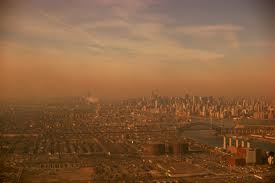During the 1980s environmental news reports tended to have an economic framing, focusing on the costs of regulation in terms of jobs and money.
 When the 1990 Clean Air Act was debated in the US the media “generally let government and business frame the discussion.” And that discussion focused on whether Americans could afford better air standards rather than the health and environmental effects of polluted air. “Almost no scientists or public health specialists were quoted.” Instead the costs and job losses cited by business and free market economists were generally cited without question.
When the 1990 Clean Air Act was debated in the US the media “generally let government and business frame the discussion.” And that discussion focused on whether Americans could afford better air standards rather than the health and environmental effects of polluted air. “Almost no scientists or public health specialists were quoted.” Instead the costs and job losses cited by business and free market economists were generally cited without question.
The new emphasis on the costs of environmentalism at the New York Times occured when Phil Shabecoff, who covered the environment on the Times for 14 years, was transferred to reporting on the Internal Revenue Service after he was told that he “wrote too much about environmental problems, and not enough about the economic problems that environmentalism was causing.”
Economics professor Richard Du Boff argued that economists quoted within this prevailing economic framework are “overwhelmingly those from the free market and neoconservative right.” He observed:
In general, coverage of the anti-regulation campaign has followed ground rules established by the right wing: Free market arguments set the tone and are then treated with careful respect if not absolute deference. The pro-regulation case is rarely given a comprehensive airing, and its advocates appear at irregular intervals, as figurative snipers...
Emphasis is on the costs of regulation—frequently exaggerated—and references to the benefits that accrue to the public are omitted altogether.
This cost-benefit framework does not consider who gets the benefits—the public—and who pays the costs—corporations. Nor does it consider that money spent by these corporations in cleaning up their act is paid to other businesses and often provides jobs and promotes economic activity.
An OECD report found that was no evidence that spending on environmental protection had affected US national growth nor the competitiveness of American firms and that, in fact, it had created some four million jobs and was likely to create another million by the year 2000. In contrast, federal enegy subsidies that encouraged wasteful energy use were costing billions each year.
Doug Smith observed the transition in reporting styles from the late 1980s to the 1990s in Canadian Dimension:
When the environment got a second chance for fifteen minutes of fame we all found ourselves subjected to endless lectures on the new three Rs, reuse, recycle reduce... we also saw the emergence of green consumer reporting. Any entrepreneur who claimed that his product was environmentally friendly won his fifteen minutes of public acclaim. At times the media’s main interest in the environment seemed to be marrying the shopping craze of the eighties with saving the planet.
Then came the fourth R, the recession. The phrase ‘It isn’t easy being green’ headlined innumerable stories on the high cost of saving the earth.... In short, environmentalism was being restored to its status as a fringe concern, one that would have to be ignored while the tough decisions were made about the economy.